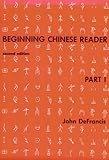http://wsupress.wayne.edu/slp/bloomfieldlr.htm
http://www.amazon.com/Lets-Read-A-Linguistic-Approach/dp/081...
by Leonard Bloomfield (an eminent linguist and pioneer of new methods of teaching hard-to-learn languages) and Clarence L. Barnhart (a lexicographer) has now been revised by Cynthia A. Barnhart and Robert K. Barnhart (I presume they are the original co-author's children). I used the first edition, and can recommend it UNRESERVEDLY. The first edition appears to no longer be in print, and some Amazon reviewers say they prefer the first edition, but the second edition, currently available, surely is better than the great mass of school materials used for English reading instruction. How I used the book is to set a goal of somewhere between one lesson a day and six or seven pages a day, and then read each lesson out loud to my child, with my child then reading the lesson back to me, with adaptation earlier in the book to do the reading and reading back a sentence at a time, and near the end of the book for the child to read by himself or herself without me reading first. All my children are strong readers who love to read. You'll find that this book, under Bloomfield's pedagogical influence, makes good use of spaced repetition of the key sound-symbol correspondences in Engish. But this is reading connected text, rather than just looking at flash cards, and the stories are remarkably interesting for their carefully graded vocabulary.
More details if you like. My main online involvement in the early 1990s was discussion of optimal reading instruction approaches for United States schools, but now I've discovered that mathematics education needs at least as much help, and have shifted focus to that. But I could provide (old) links to rationale for this approach if you like, and anyway an ounce of inexpensive prevention is worth a pound of expensive cure when helping a child's initial reading instruction prevents future reading and spelling difficulties. And kudos to you for continuing to read aloud to your child as he learns to read. Not reading to children beyond school age is one of the big missed opportunities in many middle-class families.
Aside to other participants: I'm wondering how many people who have used flash cards for foreign language learning have put their languages to the test in a country where those languages are spoken. I have studied many languages (I think there is a partial list in my user profile), and what I have observed over and over is how each language maps reality in a different way, so that ones rarely correspond one-to-one in the manner expected by flashcards. I much preferred learning to read Chinese, for example, by using the excellent Chinese Reader series by John DeFrancis
http://www.amazon.com/Beginning-Chinese-Reader-Part/dp/03000...
through which I first learned about Bloomfield's approach to foreign language teaching. (DeFrancis was a student of Bloomfield's.)
http://books.google.com/books?as_auth=John+DeFrancis&sou...
His Chinese Reader series
http://www.amazon.com/Beginning-Chinese-Reader-Part-I/dp/030...
has never been surpassed. See my HN profile for my basis of knowledge.


Simply put, the biggest single mistake learners of Chinese make in learning Chinese characters is learning them only in isolation and not also by reading connected Chinese-language text in which Chinese characters appear in "compounds" (meaningful Chinese words). The full argument for doing this is developed by the late John DeFrancis (a brilliant language teacher and textbook author) in the front matter of his book Beginning Chinese Reader,[1] which is still a very worthwhile book decades after it was first published. DeFrancis built in a lot of spaced repetition in the book lessons, back in the days before "spaced repetition" was a trendy term, but he crucially also makes sure the lesson texts illustrate the various ways that Chinese characters enter into compounds to form high-frequency words in the modern Chinese vocabulary. Try it if you'd like to more Chinese in the most efficient way possible.
[1] http://www.amazon.com/Beginning-Chinese-Reader-Part/dp/03000...
P.S. for a more extensive discussion of how to learn natural human languages effectively, see a comment of mine from about two years ago that was very popular with other readers of HN:
https://news.ycombinator.com/item?id=6302276#up_6302816